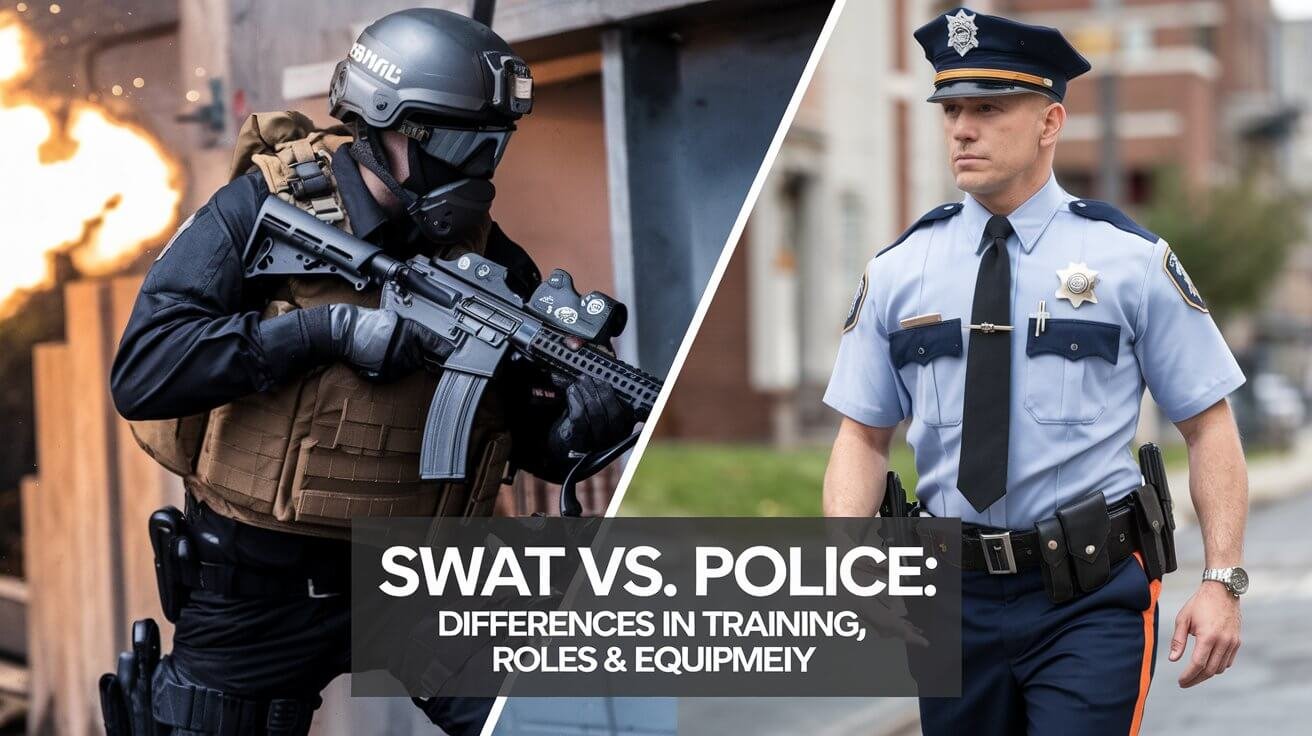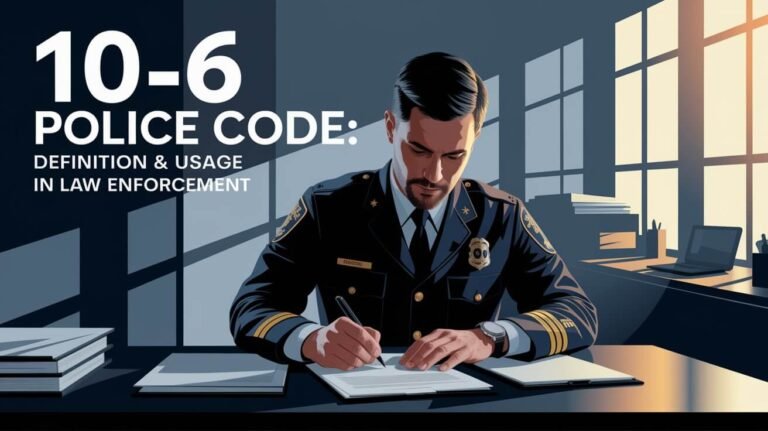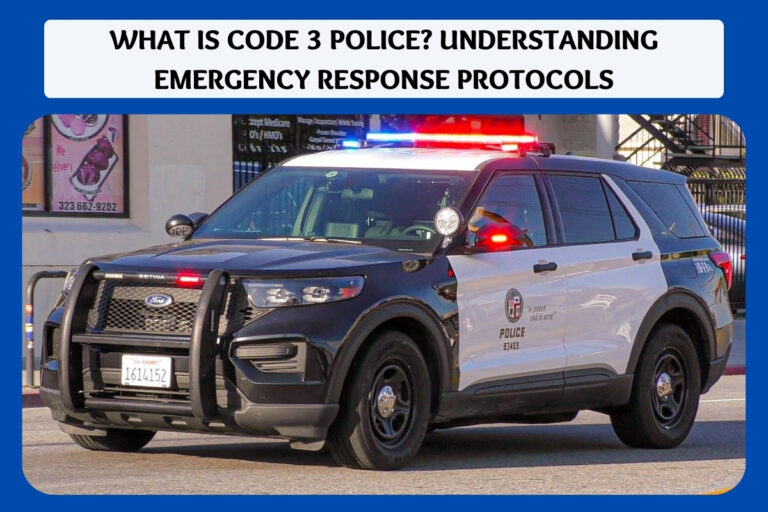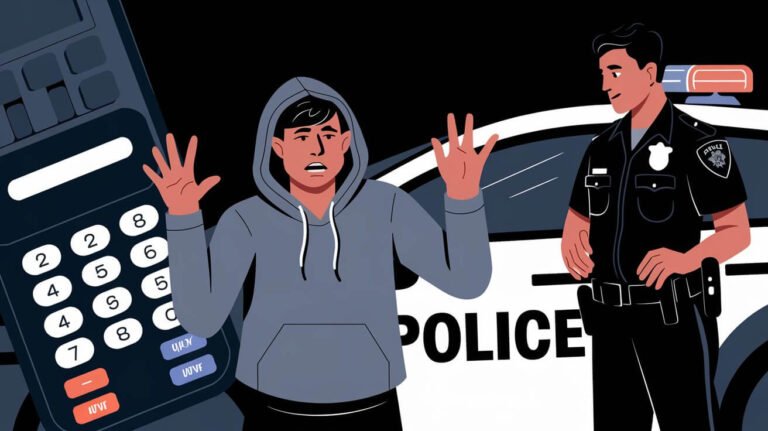Swat Vs Police: Differences in Training, Roles & Equipment

In the world of law enforcement, SWAT teams and regular police forces are two distinct groups. They both work hard to keep us safe, but they do it in different ways. Have you ever wondered what makes SWAT teams special? What skills do they have that regular police don’t?
Let’s explore the world of SWAT and find out what makes them different from regular police.
Origins and Evolution of SWAT Teams in Law Enforcement
The SWAT team’s story began in the 1960s. Back then, police were outgunned by criminals. This led to the creation of SWAT teams in 1964, starting with Philadelphia.
Birth of SWAT in Philadelphia
The Philadelphia Police Department started the first SWAT unit. It was to tackle bank robberies and violent crimes. This team marked a new era in law enforcement with its training and gear.
LAPD’s Influence on Modern SWAT
In the 1960s, the LAPD also set up its SWAT team. Led by Inspector Daryl Gates, it helped make SWAT famous. The LAPD’s team set the standard for today’s SWAT teams.
Historical Development Through Decades
SWAT teams have grown a lot since then. They became more common in the 1980s during the “War on Drugs.” The 1990s saw more use after the North Hollywood shootout and Columbine High School massacre. Now, SWAT teams are key in law enforcement, dealing with riot control, violent confrontations, and counterterrorism tasks.
Core Functions of Regular Police Forces
Regular police officers are key to keeping law and order in their areas. They handle emergencies, solve crimes, and follow traffic rules. They also connect with the community, helping to keep everyone safe.
Police officers are quick to respond to emergencies. They deal with crimes, disturbances, and medical issues. Their calm and quick thinking is vital in these situations.
They also lead criminal investigations. This includes collecting evidence, talking to witnesses, and finding out who did it. Their sharp skills help solve tough cases and keep justice on track.
But their work doesn’t stop there. They also reach out to the community. Through community policing, they build trust and tackle local problems. This approach improves communication and makes the police more effective.
| Key Responsibilities of Regular Police Forces |
|---|
| Responding to emergency calls Conducting criminal investigations Enforcing traffic laws and regulations Engaging in community policing efforts Maintaining public order and safety Providing assistance to citizens in need |
In short, regular police officers are crucial in law enforcement. They are the first to respond, the ones who solve crimes, and the ones who connect with the community. Their dedication to safety and their many roles make them vital to society.
SWAT vs Police: Key Operational Distinctions
SWAT teams and regular police forces are both key to keeping us safe. But they do different jobs. SWAT teams are trained for tactical operations and crisis management. Regular police officers handle everyday law enforcement and connect with the community.
Training Requirements and Specializations
SWAT team members get special training in marksmanship, tactical maneuvers, and crisis negotiation. They must stay in top shape and be skilled with weapons. Regular police officers get training for general policing and talking to the community.
Equipment and Arsenal Differences
SWAT teams have advanced specialized weapons and gear. This includes automatic firearms, sniper rifles, and body armor. Regular police officers carry standard sidearms and less specialized equipment.
Response Protocols and Deployment Criteria
SWAT teams handle high-risk situations like hostage situations and counter-terrorism operations. They use special tactics and equipment. Regular police officers deal with everyday calls and community policing.
The differences between SWAT teams and regular police show their unique roles. This setup helps both teams tackle the many challenges of modern policing.
Tactical Equipment and Specialized Weapons
SWAT teams are the elite units in law enforcement. They have special gear and weapons for high-risk situations. This gear gives them an edge over regular police, helping them tackle complex tasks better.
One key piece is body armor. These vests protect against bullets and knives. SWAT also uses ballistic shields for cover during dangerous entries.
SWAT teams also have night-vision devices. These advanced optics help them see in dark places. This is vital for missions in low light, like counter-terrorism and hostage rescues.
SWAT teams use special firearms too. They have automatic rifles, submachine guns, and sniper rifles. These, along with tactical gear, give them the power to face armed suspects.
SWAT weapons are also flexible. Officers can change their guns for different missions. This flexibility makes SWAT teams more effective in various situations.
SWAT teams’ gear and weapons are key to their success. They have everything from body armor to night-vision devices. This equipment helps them keep the public safe and catch dangerous people.
High-Risk Situation Management
SWAT teams are key in dealing with high-risk situations that normal police can’t handle. They are trained for tough scenarios like hostage situations, armed standoffs, and counter-terrorism. Their skills are vital in these challenging times.
Hostage Scenarios
When hostages are involved, SWAT teams use negotiation and tactical entry to safely end the crisis. Their training helps them calm tense situations, gather info, and plan to safely remove threats. This keeps innocent people safe.
Armed Standoffs
In armed standoffs, SWAT teams use their advanced gear and tactics to control the situation and reduce risks. They use special weapons, comms, and surveillance to get info, set up perimeters, and plan a strategic response. This helps them effectively end the crisis.
Counter-Terrorism Operations
SWAT teams are crucial in counter-terrorism, working with other agencies and intelligence to stop and respond to terrorist threats. Their training and equipment allow them to conduct raids, secure risky areas, and neutralize threats in complex, urgent situations.
SWAT teams are essential in managing high-risk situations that need a specialized, tactical approach. Their skills in crisis response, tactical interventions, and negotiation techniques are key in protecting the public and enforcing the law.
Regular Police Patrol and Community Engagement
Regular police officers are key in keeping communities safe. They make sure to be seen and talk to people often. This helps build trust and makes everyone feel safer.
These officers do many things to keep us safe. They stop cars, answer emergency calls, and solve small crimes. They also join in community events. This way, they get to know the area well and can stop problems before they start.
Crime prevention is a big part of their job. They check on businesses and homes to stop crimes. This helps keep everyone safe and makes communities better.
They also focus on neighborhood policing. This means they work with people to solve local problems. It makes everyone feel like they’re part of keeping their area safe.
Regular police officers do a lot to help keep us safe. They work hard to prevent crimes and keep communities strong. Their efforts make sure we can all live in safe and happy places.
Advanced Training Protocols for SWAT Officers
SWAT officers get tough training to stay fit, skilled with weapons, and make smart tactical choices. This training helps them deal with tough situations like crisis talks, close combat, and calming down tense moments.
Physical Fitness Standards
SWAT officers must stay in top shape to handle stressful jobs. For example, the Cleveland, Ohio SWAT team has a Physical Fitness Test (PFT). It tests pull-ups, sit-ups, push-ups, and a three-mile run.
Weapons Proficiency Requirements
Being good with weapons is key for SWAT. They get lots of training in shooting and close combat. This practice prepares them for real-life situations where they must act fast and accurately.
Tactical Decision Making
SWAT officers practice making decisions in tough situations. They go through mini-scenarios like drug raids and hostage rescues. These exercises help them learn how to negotiate, fight in tight spaces, and calm down tense situations.
| Agency | Population Served | SWAT Team Size | SWAT Training Requirements |
|---|---|---|---|
| Cleveland, Ohio | 386,000 (city), 3,516,000 (metro) | Full-time SWAT unit | Physical Fitness Test, Scenario-based Training |
| Pasco Sheriff’s Office, Florida | 500,000 | 21 SWAT members | Obstacle Course, Shooting Courses, Rappelling, Pool Swim, Push-ups, Sit-ups |
| Clearwater, Florida Police Department | 115,000 | 24 SWAT members, 9 SWAT medics, 11 negotiators | Basic SWAT School, Probationary Year |
“The advanced training protocols for SWAT officers are designed to ensure they are prepared to handle the most challenging and high-risk situations, from crisis negotiation to close-quarters combat and de-escalation techniques.”
Jurisdictional Authority and Chain of Command
SWAT teams work under a strict hierarchy in law enforcement. They fall under the control of specialized units in local police or sheriff’s offices. Decisions to deploy SWAT teams involve high-ranking officers and follow strict protocols.
Working together across agencies is key when SWAT is needed, like in big operations or incidents that span areas. The chain of command helps keep communication clear and decisions made quickly. Tactical commanders guide the SWAT team on the ground.
This structured way of law enforcement hierarchy and inter-agency cooperation is vital for SWAT success. It ensures resources are used well, specialized skills are applied, and control is kept throughout.






